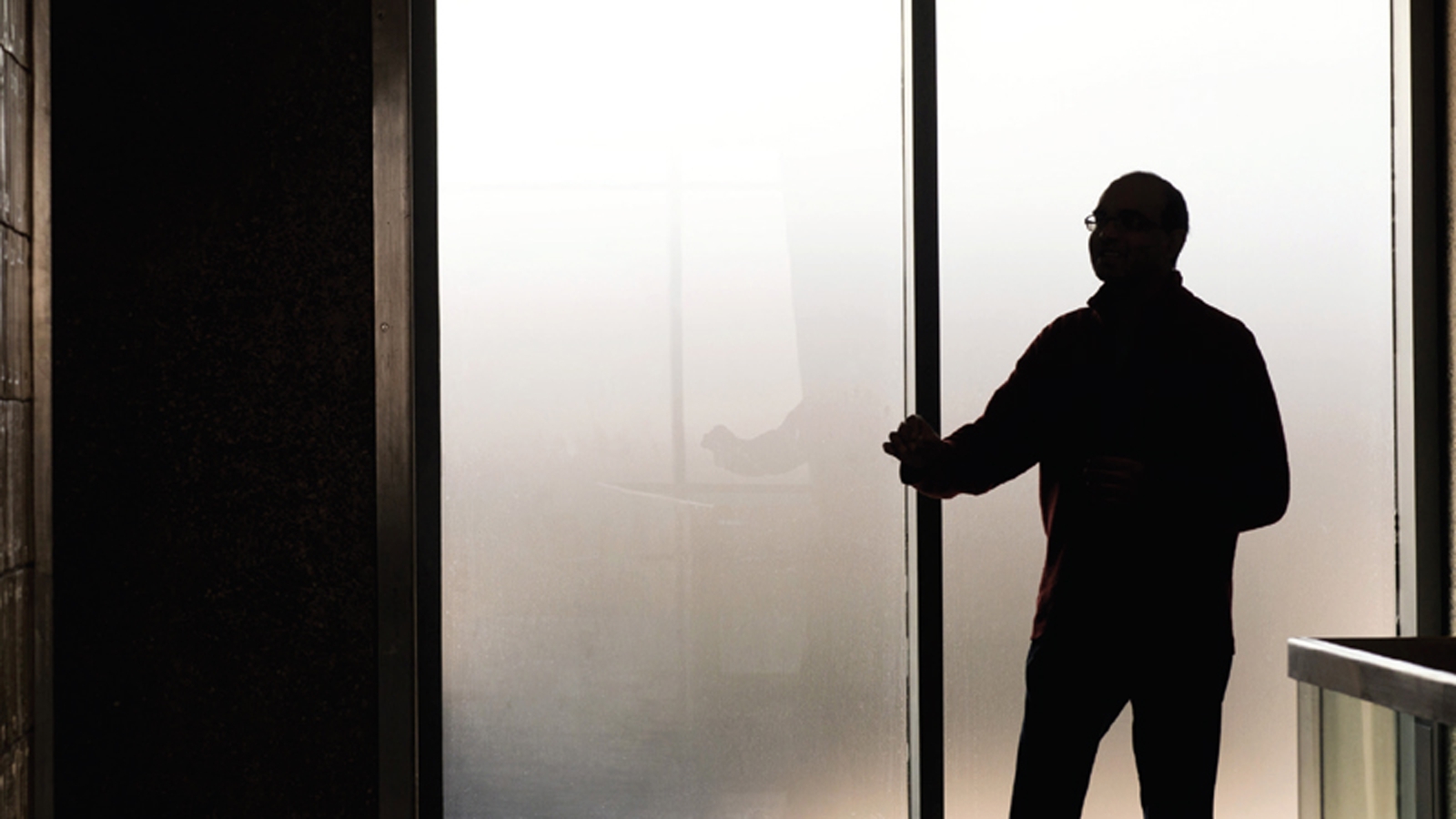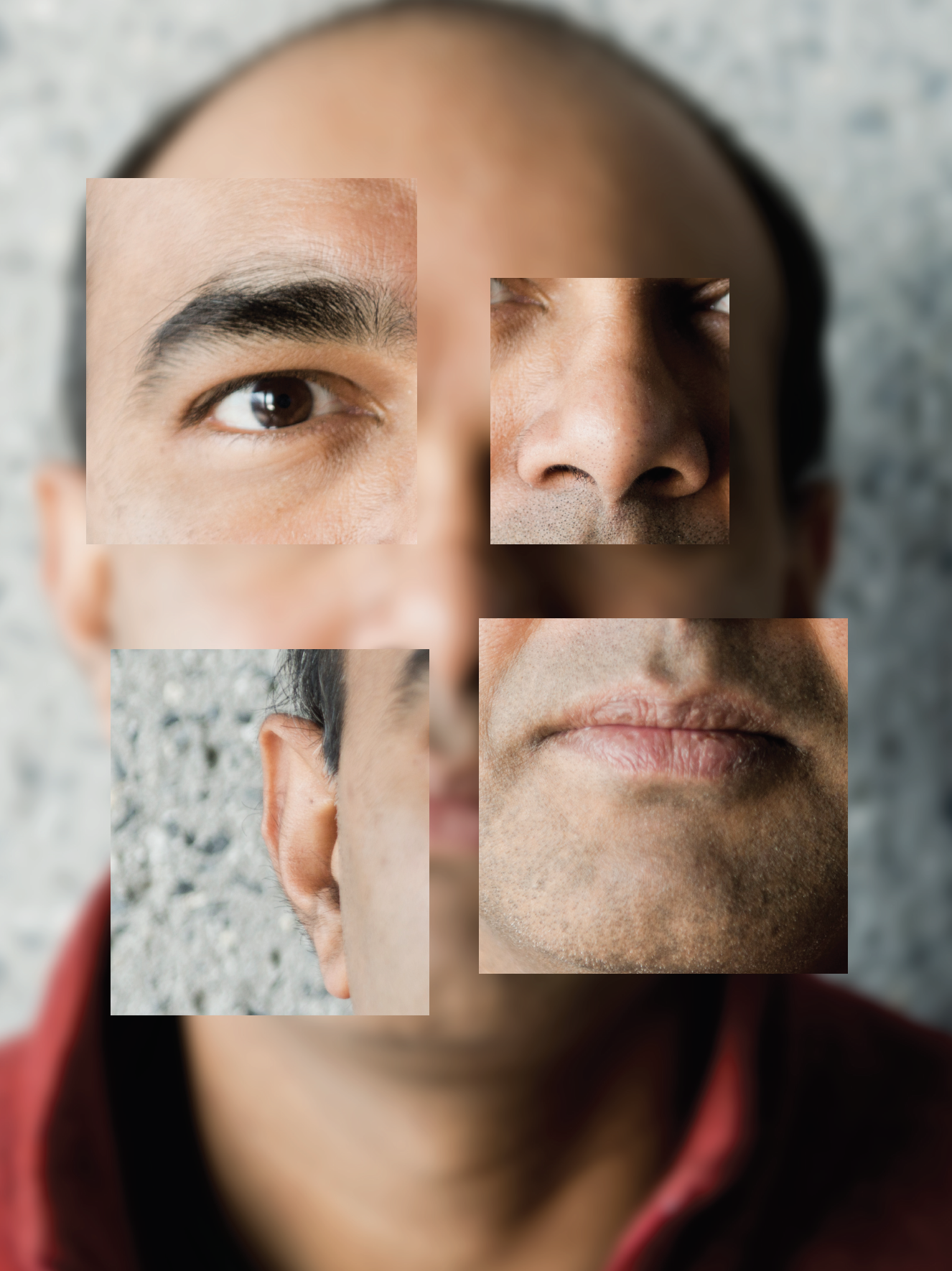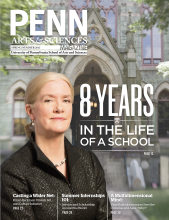A Multidimensional Mind
Vijay Balasubramanian sees the universe and asks, "Why?"

“One of the glorious things about being a physicist is that you get to ask things like ‘Could there be extra dimensions?’” says Vijay Balasubramanian. “Does that sound crazy? Yeah. But could it be true? Yes. In fact, for string theory to work, it has to be true. So let’s try to make a prediction, an experimental test … How much cooler can it get?”
The Cathy and Mark Lasry Professor of Physics and Astronomy loves his job. As he sees it, his field is anything subject to the laws of physics. He examines black holes, explores the limits of Occam’s razor, researches how our brains work, and tries to figure out how there might be extra dimensions in our universe right now. (One possibility: dimensions so tiny we haven’t found them yet.)
He does this by paying no attention to any disciplinary dividing lines in researching a problem. Trained in computer science as well as physics, he concentrated on string theory for his doctorate, but became interested in neuroscience—the study of how neural circuits and brains work—toward the end of his graduate studies and as a junior fellow of the Harvard Society of Fellows.
I emphasize to students that if it isn’t fun, this probably isn’t the career for them.” – Vijay Balasubramanian
When he came to Penn in 2000 he discovered that he could walk over to the neuroscience lab in the medical school during lunchtime, and that faculty throughout the University were very interested in collaborating. He wrote a number of papers with Peter Sterling, now an emeritus professor of neuroscience. Then Balasubramanian applied for a neuroscience grant and got it. “All of a sudden I was doing both things—string theory and neuroscience,” he says. “And I thought, okay, apparently I enjoy it.” That was important: “I emphasize to students that if it isn’t fun, this probably isn’t the career for them.”
More than fun, it’s deeply meaningful to him. “I’ve always wanted to understand nature at all scales of organization, in the style of the great founders of physics rather than the compartmentalized mode of modern academia,” Balasubramanian says. He also believes our ability to understand the fundamental laws of nature is shaped and limited by how our brains themselves work; understanding that is part of the same quest.
Whether brains or black holes, that quest is to answer the question, “Why?” “Physicists believe there are orderly relationships that underlie even the most complex phenomena, that you should be able to explain why things are organized the way they are, not just what and how they are,” he says. “And if you believe there are laws to be uncovered, you go look for them.”
Physicists also bring “an arsenal of technical tools” to collaborations, and learn from their collaborators in turn. “Working in neuroscience has taught me the art, the importance, and the joy of being in close contact with the data and experimental facts,” says Balasubramanian. “My interest in the ways information is produced and processed in neural systems has led me to information theory, and I’ve now applied those techniques to problems in string theory ranging from the physics of black holes to the ‘emergence’ of space time.”
Information inside black holes is by definition unobservable. But, as physicist Stephen Hawking has shown, black holes slowly leak energy and evaporate, presenting one of the great conundrums in theoretical physics. “Quantum mechanics says that you cannot lose information,” says Balasubramanian. “But how do you recover the information that was inside the black hole?”
The information in complicated earthly systems, such as superconductors and brains, had long been equally unobservable, but technology has advanced so much we can begin to see what’s happening there. Scientists have been studying neurons one at a time, following a classic scientific method that examines a subject—whether society or a material or a living organism—by breaking it down. “Then you explain in great detail the properties of the constituent components,” says Balasubramanian, “and then, hey, it’s like Lego, you stick them together.”
He and others are realizing that this is not enough; in many complex materials information is shared across the entire system. “Suppose the key thing is actually the interaction between the constituents—that’s what makes the unit function,” he says. “If you think about human societies, they work the way they do because of the ways in which many, many, many individuals interact.”
Balasubramanian thinks of the brain as a sort of a computer, although organized nothing like a laptop computer, in which every task is handled by a central processing unit. In the brain, input is split up into many specialized functions, with a different area of the brain responsible for each one. Then each of those areas is further divided. It’s extremely efficient; a laptop consumes about 80 watts of power, while your brain uses about 10 watts. “Your brain consumes about the power of a refrigerator light bulb,” says Balasubramanian. “With such a small amount of power, we do enormously many things, right? And a computer can’t do art appreciation.”
“People talk in biology about the structures of animal bodies or the digestive system being adapted to what’s in the world around it,” he says. “So we’re saying that the information processing architectures in the brain are also adapted to what’s in the world.” To learn more, he’s studying how the brain processes input from sensory systems like sight and smell, collaborating with faculty including psychology’s Professor David Brainard and Assistant Professor Nicole Rust; fellow Professor of Physics and Astronomy Philip Nelson; and, at the Perelman School of Medicine, Associate Professor of Neuroscience Joshua Gold, and Assistant Professor of Otorhinolaryngology Maria Geffen.
His collaboration with Brainard, whom he describes as “a galactic expert on color vision,” began when they were both working with Sterling. “Vijay was thinking about first principles, explanations for why the retina has some of the properties it does,” says Brainard. “And we thought, hey, we ought to be able to take those ideas and think about their implications for the color process.” They published a paper on the reasons behind the arrangement of photoreceptors, and another on the Penn Natural Image Database, which they created for their research. They’re currently examining whether variations in how the retina adapts to changing environmental conditions can shed new light on color processing.
"Your brain consumes about the power of a refrigerator light bulb," says Balasubramanian. "With such a small amount of power, we do enormously many things, right? And a computer can't do art appreciation."
“I knew the content facts about color vision and how the retina would respond, and Vijay had ideas about what principles might be decisive or governing in terms of the architecture, and how to do the calculations,” says Brainard. “Collaborations emerge when you talk to people, when you run into them. And you run into them if the daily features of your academic life cause that to happen, and the institution doesn’t create any artificial impediments to that happening.”
Balasubramanian is making the most of his freedom to roam. “I think that one of the hottest areas of physics right now is the physics of the living world,” he says. “If people don’t know anything, well, that’s exactly what you should be working on. It’s the Columbus syndrome, right? There’s an uncharted land, so you should go there. You’ll surely find wonderful new things that no one ever saw before.”
He’s equally excited to share these new lands with his students, to communicate the great things that have been and that are being discovered, whether or not they plan to be scientists. “Part of being a citizen in a democracy involves being fully informed about all the kinds of developments that are going on so you can make informed judgments about the world,” says Balasubramanian, who has received the Ira H. Abrams Memorial Award for Distinguished Teaching, the highest teaching award from SAS. “And I think it enriches one’s life, to be able to have a conception of how the universe came to be, and where it’s going. Being broadly trained, in the liberal arts sense, is hugely important because you don’t know what’s going to be important to you in the long run. The world changes.”
He brings another kind of interdisciplinarity to his classroom when he reads students the passage from Remembrance of Things Past in which Proust describes how the smell and taste of a madeleine pulls out an entire memory from his childhood. “I read that out in my classes when I’m describing olfaction because it’s almost like reading out the pathways in the brain that lead from smell to memory to emotion. Very often it is literature, even more than neuroscience and psychology, that teaches us about ourselves.”
“Without strong economies you can’t do anything, so you have to have that economic basis for learning,” he says. “But I think the pursuit of knowledge should not necessarily be based on what you think the immediate gain is going to be. There has to be this vision of, well, of all human learning.”
Challenged to sum up “The Knowable Universe” in under a minute for the School’s 60-Second Lectures series, Balasubramanian said, “The most amazing thing about this world of wonders is that we can understand it. If you think about it, there’s no a priori reason we should be able to explain anything about the world. It’s an amazing gift.”





